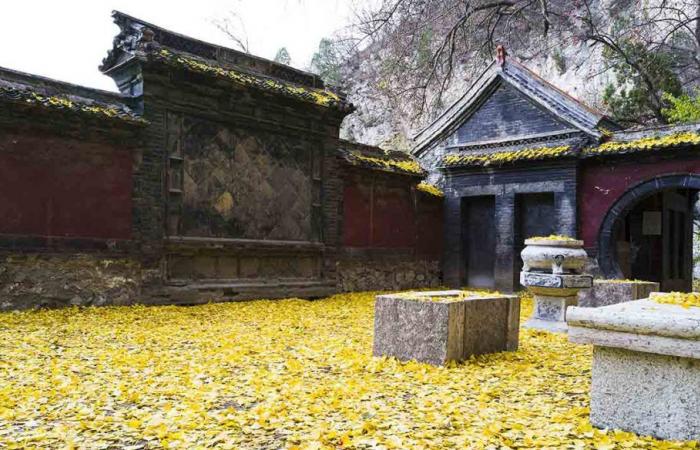“The leaf of this tree, entrusted to my garden from the East, makes one savor its secret meaning as the wise man likes to do”wrote JW von Goethe about the ginkgo biloba after one of his trips. A tree with a unique charm, as often happens with what has an oriental flavour. In autumn, when theginkgo tree – or ginko, ginco or maidenhair tree –like almost all plants, loses its leaves, which in this case are golden, and prepares for the arrival of winter and shows a unique show, until, in spring, it returns to its original splendor.
In ancient times, in China, ginkgo was considered a beneficial substance for the heart and lungs. Doctors used it to treat asthma, chilblains and swelling caused by the cold. Buddhist monks planted it alongside tea, the ancient Chinese and Japanese consumed the toasted seeds as a digestive remedy. Indian Ayurvedic healers associated it with longevity by using it as an ingredient in “soma”, the elixir of life. Consider that in Japan some ginkgo plants even survived the atomic bomb that fell on Hiroshima. This tree was introduced into Europe only in 1730, the first specimen arrived in Italy in 1750 and is still found today in the Botanical Garden of Padua, a UNESCO World Heritage Site. Today, even our doctors recommend it for some pathologies.
The ginkgo of Gu Guanyin Buddhist Temple
In China, there are still many ginkgo plants. One in particular, however, that grows near the Buddhist temple of Gu Guanyin a Xi’anin the mountainous region of Zhongnan, has become very famous. The ancient ginkgo biloba tree is said to have been planted by Emperor Tai Zong, founder of the Tang Dynasty, who reigned from 626 to 649. During its autumn show, this 20-meter-high tree with a three-meter trunk attracts thousands of visitors every year. thousands of tourists from all over the world to this remote corner of great China. This plant is 1400 years old and when in autumn it loses its thousands of leaves it creates a wonderful golden carpet all around.
The Magic of Chinese Ginkgo
Il ginkgo it is a very ancient plant species that grows in China and is not only famous for having beautifully colored leaves. In fact, they provide a fundamental food and a MEDICAL used as a traditional remedy in Asia since ancient times. The ginkgo tree is widely used as an ornamental plant in parks, avenues and gardens of urban centers in both China and Japan, thanks to its great resistance to pollutants. It is also often used to make bonsai.
The benefits of ginkgo
Ginkgo also has a symbolic meaning: in oriental culture, its beauty has a beneficial and healthy effect on people. It is often used for memory disorders and conditions that, especially in old age, are associated with reduced blood flow to the brain (such as headaches, dizziness, tinnitus, difficulty concentrating and mood disorders).
It is used to treat other problems associated with circulatory disorders, such as leg pain when walking (claudication) and Raynaud’s syndrome. Finally, it is used in cases of cognitive problems associated with Lyme disease or depression, sexual dysfunction, glaucoma, diabetic retinopathy, age-related macular degeneration or leading to memory problems typical of Alzheimer’s. The extract of its seeds, a part less studied by experts, contains substances that may help kill bacteria and fungi.






